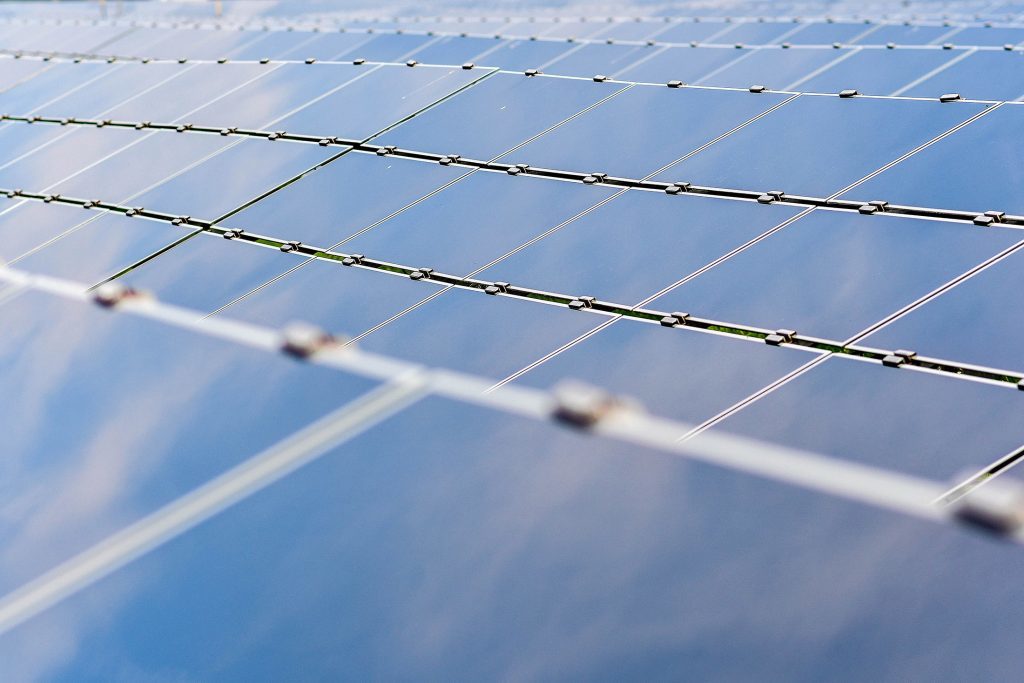
Solar developers are suspending construction as the looming threat of U.S. import tariffs has driven up prices and spurred hoarding, crimping panel supplies.
“We’ve had roughly $500 million worth of work that we’ve had to put on hold,” said Scott Canada, who oversees renewable energy projects for McCarthy Building Cos. of St. Louis. “The supply of panels has just evaporated as everybody is grabbing what they can.”
The disruptions date to about May, after bankrupt panel manufacturer Suniva Inc. filed a trade complaint asking for protection from cheap imports. As the case gained steam, developers rushed to stockpile every available panel. The case is currently before the U.S. International Trade Commission and may eventually reach the Oval Office, where President Donald Trump has the authority to impose tariffs.
The crunch is an abrupt reversal for the U.S solar industry, which six months ago was awash in inexpensive panels. Developers say prices have swelled by about 40 percent in the past four months, making some projects uneconomical to build. And that’s if they’re lucky enough to have a supplier at all.
“If you don’t have panels lined up for ’17 than you aren’t going to get them,” said Laura Stern, president and co-founder of Nautilus Solar Energy LLC in Summit, New Jersey. “The market is really tight.”
Solar manufacturing is dominated by companies in China and elsewhere in Asia, where intense competition and booming output helped drag down global prices more than 50 percent in five years. While those declines have been a boon for companies that build solar farms, they’ve squeezed panel makers in markets with higher labor costs, including the U.S.
Georgia-based Suniva, which filed its trade case in April, is asking for tariffs that may double the price of panels in the U.S. The trade commission has until Sept. 22 to investigate the case and send its findings to Trump, who gets final say.
“We’ve got our fingers crossed that smarter minds will prevail and we won’t wind up with tariffs,” said Andrew Giraldo, president of engineering, procurement and construction at National Renewable Energy Corp. of Charlotte, North Carolina.
Chinese Demand
Panels account for about 40 percent of the cost of solar farms, and even modest price swings can drag a project underwater. Before the Suniva complaint, panels were selling for about 32 cents a watt in the U.S. Now developers say they are paying as much as 45 cents. That drove up the global average price last month by the most in more than two years.
Suniva’s trade case isn’t the only reason for the shortage. China, the world’s largest solar market, caught analysts by surprise this year by announcing plans to more than double the nation’s total solar capacity by the end of 2020. That’s boosted demand in the backyard of the largest panels makers, including JinkoSolar Holding Co., JA Solar Holdings Co. and Trina Solar Ltd.
Supplies are so thin in the U.S. that companies are reselling panel contracts on the secondary market, said Duncan Frederick of Rosendin Electric Inc., a San Jose, California-based solar contractor that’s built more than 2.2 gigawatts.
Project Delays
Still, the current shortage is apt to be short lived, analysts said. U.S. installations are forecast to decline next year, and manufacturers aren’t cutting production capacity. Once the Suniva case is resolved, no matter the outcome, panel prices will stabilize.
“This should be behind the industry by the end of the year,” said Credit Suisse Group AG analyst Maheep Mandloi.
But for now, the case has roiled the industry and even long-term supply agreements are no guarantee that developers can get panels. Borrego Solar Systems Inc. has been forced to delay projects for months because its suppliers can’t deliver equipment on time, said its president, Aaron Hall. In other cases, panel makers have pushed to renegotiate contracts to secure higher prices.
“We are struggling hard,” Hall said. “We are having to take fewer panels than promised and at higher prices.”
Recommended for you
